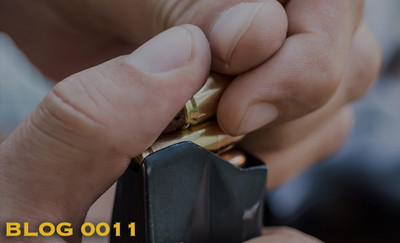


When it comes to concealed carry, one of the most debated topics is how much ammunition to carry daily. Factors like firearm capacity and personal comfort are important considerations. Environmental conditions play a big part in determining how much ammunition to carry. Depending on the location, such as urban or rural areas or low-crime or high-crime environments, ammo needs will differ. Tailoring the carry loadout to these factors can make all the difference in a self-defense scenario.
Starting with urban or built-up areas since the vast majority reside in these locations. The proximity to other people is a major factor. Typically, being more densely populated, there’s a statistically higher chance of violent encounters. Attacks are likely to happen at close range, and there’s an increased possibility of multiple assailants. Criminal activity, such as robberies or muggings, tends to happen in what is referenced as transitional spaces, such as parking lots/garages, gas stations, and tight spaces. Given this, carrying a higher-capacity handgun, such as a compact pistol, is advisable.
Additionally, it’s wise to carry a spare magazine in case a prolonged engagement requires more shots than expected, especially in situations involving multiple attackers. In rural areas, threats are typically less frequent, but encounters might occur over greater distances. A defensive situation in the countryside or remote areas might involve different challenges, such as wild animals or a more spread-out population, meaning police response times will be slower. In these scenarios, the need for many rounds in a close-quarters self-defense scenario is less likely. Since the pace of life tends to be slower and violent crime less frequent, the comfort and ease of lower-capacity options are often prioritized.
Living or working in a low-crime area can justify the temptation to carry fewer rounds. Basing choices off the statistical unlikelihood of a violent encounter. Low-crime neighborhoods tend to feel safer, and many carriers choose a more compact, comfortable firearm with fewer rounds. However, the unpredictable nature of violent encounters might still be a reason to choose a firearm with medium capacity. The benefit of added capacity could make the difference in a critical situation where more rounds are needed, even in a typical low-risk environment. In high-crime environments, the decision on how much ammunition to carry becomes more urgent. Violent crime rates are higher, and the likelihood of facing multiple attackers increases. It’s common in these environments to carry high-capacity firearms to ensure enough ammunition for a prolonged engagement. Additionally, carrying a spare magazine or even a backup gun can be tactically sound in high-risk areas. The extra ammunition offers flexibility in a life-threatening situation where accuracy may suffer due to stress or where multiple shots are needed to neutralize threats.
Environmental factors play a significant role in determining how much ammunition to carry for concealed carry. In urban, high-crime areas, higher capacity and extra magazines are advisable. In rural or low-crime areas, fewer rounds may be sufficient, though it’s still wise to carry or have handy a spare magazine for emergencies. Ultimately, the goal is to find a balance between comfort, practicality, and the environmental threat level.